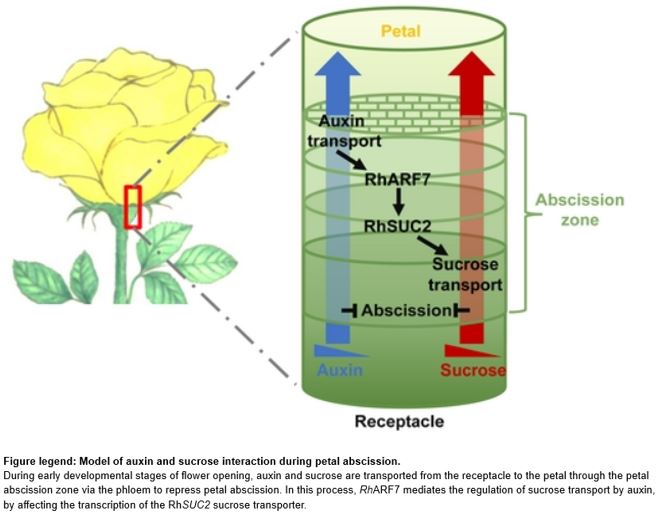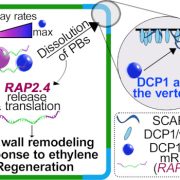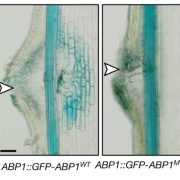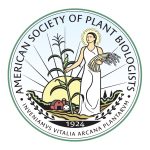The sweet smell of sucrose transport during rose petal abscission
Liang et al. demonstrate that auxin modulates sucrose transport to repress petal abscission in rose. The Plant Cell (2020). https://doi.org/10.1105/tpc.19.00695
By Yue Liang, Chuyan Jiang, Yang Liu, Yuerong Gao, Jingyun Lu, Palinuer Aiwail, Zhangjun Fei, Cai-Zhong Jiang, Bo Hong, Chao Ma and Junping Gao.
Background:
Abscission, a common process in plants, involves the detachment of organs from the main body. Abscission often occurs due to the lack of nutrients and competition for carbohydrates. Accordingly, carbohydrate transport is thought to play a critical role in regulating abscission. Sucrose can serve as the main long-distance transport form of carbohydrates and energy. A major decline in sucrose levels in abscising organs has been observed in several plant species, including rose, pepper, citrus, and apple. However, the significance of a reduced sucrose supply and the mechanism by which sucrose transport is regulated have not been characterized. A better understanding of the role of sucrose during abscission has direct applications for the cut flower industry, where one goal is to delay petal abscission and wilting, one method being the addition of sucrose to vase water. Abscission also plays a critical role during fruit maturation, and farmers will favor certain cultivars based on yield, time to maturity and the presence of pedicels that might damage other fruits during harvesting.
Question: We wished to identify the factors that regulate sucrose transport during petal abscission in rose. We used two rose cultivars whose petals fall off quickly as our experimental system.
 Findings: We determined that the phytohormone auxin controls sucrose transport during petal abscission. In roses, sucrose transport and auxin levels gradually decrease as flower buds mature. Petal abscission can be delayed by adding sucrose or auxin to vase water, while auxin transport inhibitors hasten abscission. This process is regulated by the auxin response factor RhARF7 via direct binding to the promoter of the sucrose transporter RhSUC2 and activation of RhSUC2 expression in the petal abscission zone. As rose flower buds age, RhARF7 transcript levels diminish, resulting in a decrease in RhSUC2 expression and lower sucrose transport through the petal AZ. Silencing of RhSUC2 or RhARF7 accelerated petal abscission.
Findings: We determined that the phytohormone auxin controls sucrose transport during petal abscission. In roses, sucrose transport and auxin levels gradually decrease as flower buds mature. Petal abscission can be delayed by adding sucrose or auxin to vase water, while auxin transport inhibitors hasten abscission. This process is regulated by the auxin response factor RhARF7 via direct binding to the promoter of the sucrose transporter RhSUC2 and activation of RhSUC2 expression in the petal abscission zone. As rose flower buds age, RhARF7 transcript levels diminish, resulting in a decrease in RhSUC2 expression and lower sucrose transport through the petal AZ. Silencing of RhSUC2 or RhARF7 accelerated petal abscission.
Next steps: We are now working on the role of the abscission accelerator ethylene in sucrose transport during abscission. Indeed, ethylene accelerates abscission but only after auxin levels and sucrose transport potential have decreased in the petal AZ.
Liang, et al. (2020). Auxin Regulates Sucrose Transport to Repress Petal Abscission in Rose (Rosa hybrida). Plant Cell https://doi.org/10.1105/tpc.19.00695










